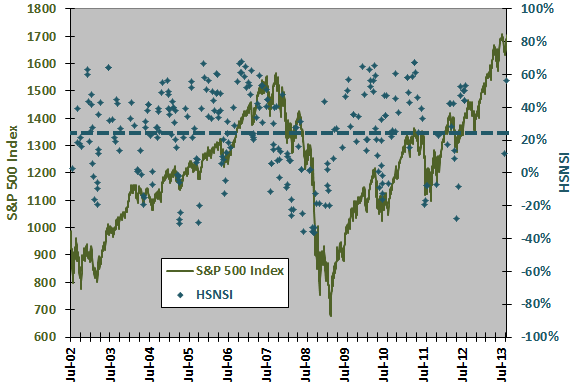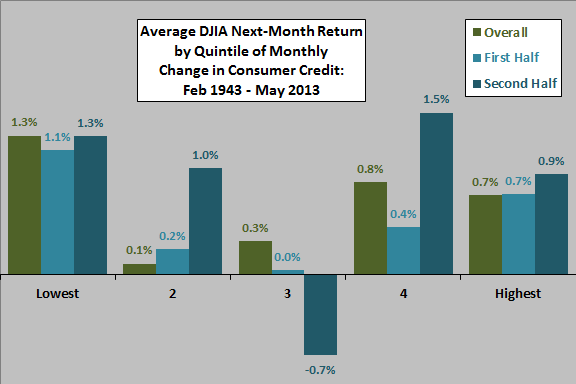Stock and Bond Returns Correlation Variability CXO Advisory
Post on: 13 Июнь, 2015 No Comment

Stocks and bonds are two of the most frequently considered asset classes in asset allocation strategies. How stable is the correlation between stock returns and bond returns? In their December 2008 paper entitled The Dynamic Correlation between Stock and Bond Returns. Thomas Chiang and Jiandong Li apply rolling regressions to analyze variations in the correlation between stock market returns and bond market returns. Using daily returns for the Vanguard Total Bond Market Index Fund (VBMFX) and the Vanguard Total Stock Market Index Fund (VTSMX) as proxies for their respective markets over the period 6/20/96 through 6/30/08, along with contemporaneous U.S. economic data, they conclude that:
- Over the entire sample period, encompassing roughly two bull and two bear markets, the Pearson correlation for stock returns and bond returns is close to zero (-0.13). However, the correlation exhibits considerable variability, as follows:
- Bullish subperiod 6/20/1996-3/24-2000: Correlation = 0.09
- Bearish subperiod 3/24/2000-10/9/2002: Correlation = -0.22
- Bullish subperiod 10/9/2002-10/9/2006: Correlation = -0.17
- Bearish subperiod 10/9/2007-6/30/2008: Correlation = -0.48

The following chart, taken from the paper, compares the stock-bond correlation (blue), the credit spread (green) and the federal funds target rate (red) over the entire sample period, with the latter two series scaled up by a factor of ten to facilitate comparison. The credit spread is the difference in yields between the 10-year Treasury note and Moodys AAA seasoned corporate bonds. The chart shows that variations in the federal funds target rate is similar to those in the correlation between stock returns and bond returns.
In other words, the mutual diversification power of equities and bonds varies for investing horizons spanning less than many years (at least a full business cycle).
In summary, investors should not view the mutual diversification power of stocks and bonds as constant for planning horizons of less than a complete business cycle.
Why not subscribe to our premium content?
It costs less than a single trading commission. Learn more here.














